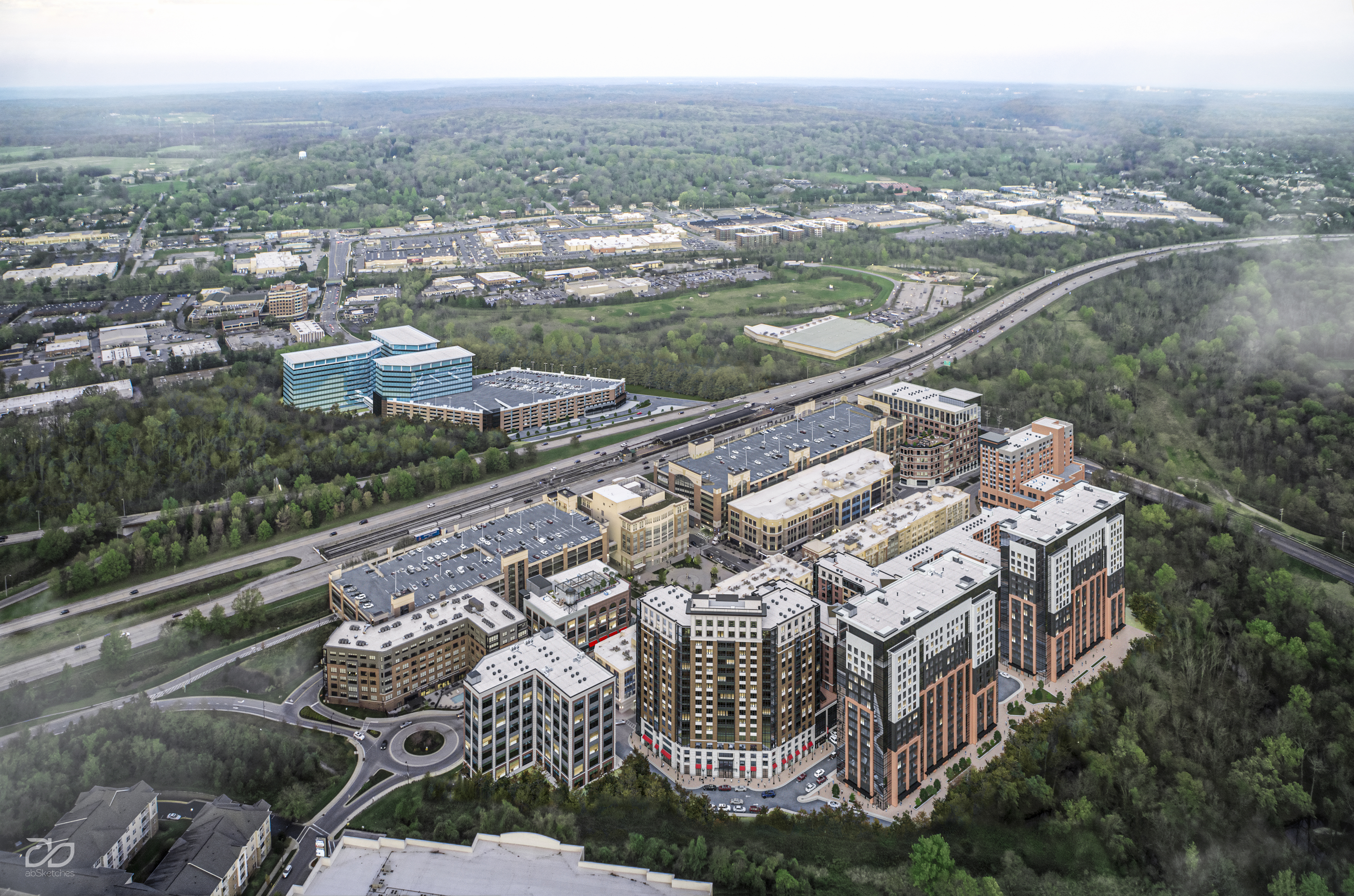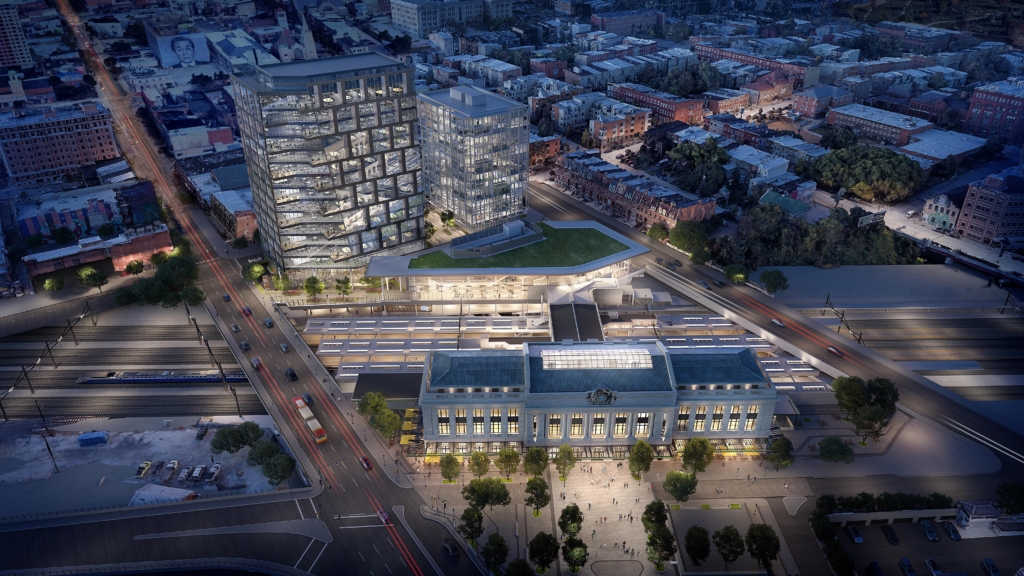
Described as a major infill project, the Penn Station TOD will refurbish the historic train station and produce 1.6 million square feet of new commercial, retail and residential space on a 40-acre site. Image courtesy of Beatty Development.
Beyond the scaffolding encasing Penn Station, crews are restoring and renovating the 140-year-old station. The $90 million project is the prelude to a multi-phase development that promises to create 1.6 million square feet of commercial, residential, retail and public space on a 40-acre site along the tracks.
At Metro Centre at Owings Mills, workers, residents and visitors are already using 135,000 square feet of office space, 80,000 square feet of retail, nearly 600 apartments, a public library, community college site and four-star Marriott hotel.
From his David S. Brown Enterprises office a block away, developer Howard Brown is preparing to break ground on his next buildings — a 124-room Westin Element hotel followed by a 12-story, 172-unit apartment building and a 100,000-square-foot office building.
Other Transit-Oriented Development (TOD) sites, however, are quieter. At Lutherville Station, Reisterstown Plaza, Odenton Town Center, Laurel, Cromwell and elsewhere, TOD plans have long been discussed but, to date, have not moved forward.
Maryland has realized limited success with creating vibrant communities and robust services near transportation hubs. However, highway congestion, limited transit services, the housing shortage, climate change legislation, the push for smart growth and the need for new drivers of economic development have convinced some public officials and private developers that Maryland needs to embark on a new, vigorous TOD effort.
“Maryland has probably the greatest TOD potential of any state that I have seen. That’s due to a variety of reasons, including the relative compactness of its transit systems and the under-developed nature of many sites,” said Jon Laria, a lawyer with Ballard Spahr who chaired the Smart Growth working group for the Moore-Miller transition team. “The opportunities for TOD in Maryland are so plentiful but it has been so undervalued and under-pursued.”
Assorted obstacles have impeded that pursuit — the high cost and long duration of TODs, lack of funding mechanisms, shifting market conditions, conflicting or incomplete state and local TOD policies, and the complex process of getting a wide array of stakeholders to agree to a development plan.
Any project that can clear those hurdles, however, stands to produce big benefits for the economy, transportation, the environment, quality of life, and the commercial real estate sector.
For example, MLR Partners has proposed a mixed-use TOD on a 13-acre site beside the Lutherville light rail station. Designed by JP2 Architects, the TOD would include 450 residential units, 20,000 square feet of retail space, 200,000 square feet of office space, and 2.5 acres of green space. The developer’s analysis indicates the project would generate $324.5 million in economic activity and provide about $16 million in total tax revenues annually to state and county governments.
A TOD in that location aligns with Baltimore County’s draft 2030 master plan, which identifies Lutherville as a “mobility node,” said Mark Renbaum, Principal of MLR Partners.
Furthermore, the development could deliver environmental improvements and ease a local stormwater flooding problem, Renbaum said. The property, which currently holds a nearly empty office/retail building, was constructed before the creation of the Environmental Protection Agency so a redevelopment would bring the site up to current environmental standards.
The proposed TOD, however, has met with local opposition and that has stalled MLR’s efforts to gain county TOD designation and zoning.
“Sometimes, you need political courage to move a TOD forward,” Renbaum said. “The state and county have to ask themselves what is in the best interest of the greater Baltimore region. We need long-term thinkers.”
That long-term thinking is happening at some sites.
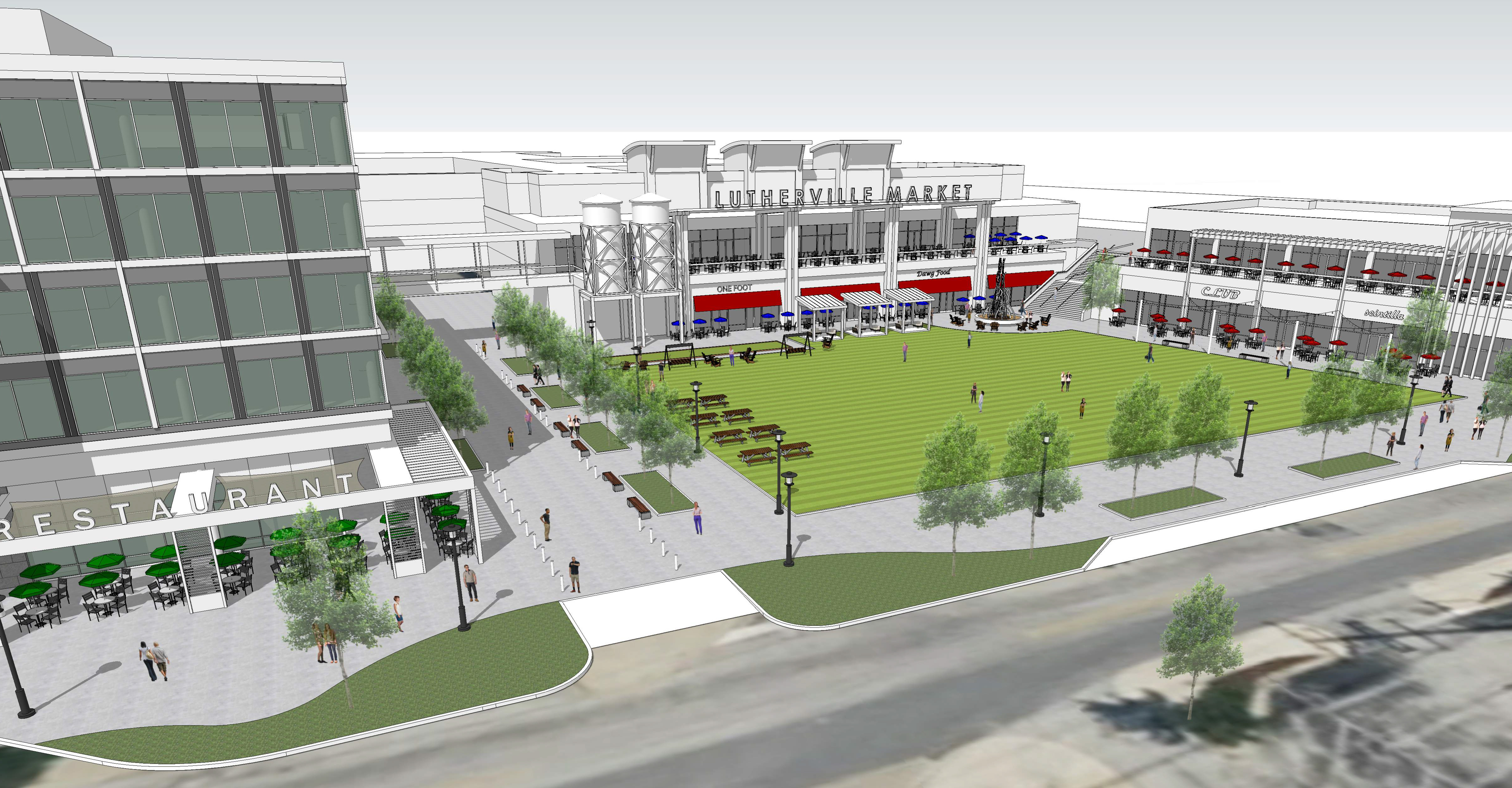
The proposed Lutherville Station TOD would create 220,000 square feet of office/retail space and 450 residences, and trigger an estimated $324.5 million in economic activity. Image courtesy of JP2 Architects.
After a public-private partnership failed to launch a proposed TOD at Odenton Town Center, the project languished for years. Then, state and local officials devised a way to begin reviving it. The state gave Anne Arundel County permission to build on a state-owned parking lot beside the rail station. The county, which had previously raised TIF funds for the Odenton project, decided to execute phase one of the TOD — a parking garage — on its own. The garage is expected to receive permitting this year and begin construction in 2025.
“We are doing this in the hopes of attracting some private, mixed-use, transit-oriented development on the site,” said Wes MacQuilliam, Chief Operating Officer of Anne Arundel Economic Development Corporation.
TODs, MacQuilliam said, could help the county address several key issues, such as creating more housing and affordable housing, achieving higher density development, and providing residents with easier access to job sites and other destinations.
“The biggest obstacle to getting dense development is the traffic it generates,” he said. “Putting dense development close to public transit removes the obstacle.”
Similarly, David S. Brown Enterprises revived the Owings Mills Metro Centre project after its original developer aborted efforts to launch the TOD.
“Building a TOD takes a fair amount of sophistication, expertise and diversification. You have to be skilled in building residential, retail and office,” said Howard Brown, Chairman of David S. Brown Enterprises. The company previously completed the Symphony Center TOD – a mixed-use development beside the Cultural Center light rail station and Meyerhoff Symphony Hall.
“It is also an education process,” Brown said. “You have to educate the government and educate the public. It’s not simple because you are going to take a piece of property and put a lot of density on it with a lot of different uses.”
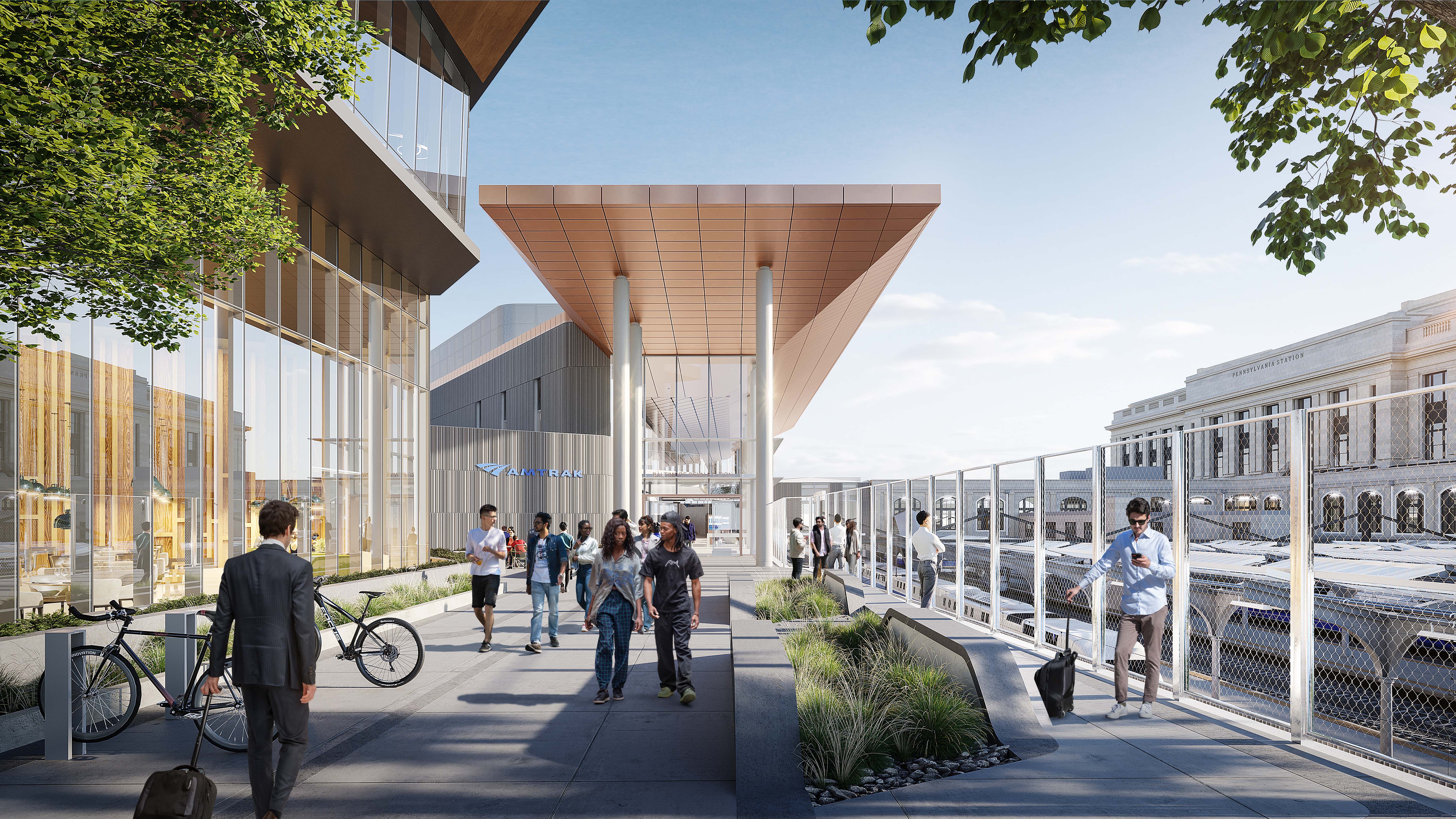 Developers, he added, have to be able to commit to very long-term projects (work on Metro Centre started in 2005) and adjust their work to changing market needs.
Developers, he added, have to be able to commit to very long-term projects (work on Metro Centre started in 2005) and adjust their work to changing market needs.
Metro Centre was designed to create a downtown for Owings Mills “and I think it has transformed the Owings Mills market,” he said.
Now Brown believes the TOD could also serve additional purposes.
“The next thing we are trying to do is develop some workforce housing as part of the complex. We would also like to do assisted living or a 50-plus building,” said Brown, who expects to develop a total of 1,500 apartments on the site.
Shifting ideas about what constitutes an attractive housing location for seniors has made Metro Centre “an ideal location,” he said. “You have a library and college onsite. There is a hotel and good restaurants. It’s how people want to live.”
At Penn Station, Beatty Development and Cross Street Partners are aiming to foster a new economic hub.
As renovation/restoration work continues on the historic station, the developers hope to expand the project across the tracks to the Lanvale parking lot as soon as late 2024. The plan includes a high-rise office building with ground-floor retail along with the creation of office and retail space in Penn Station itself.
Beatty Development’s Director of Operations, Max Beatty, predicts the Lanvale building and repurposed Penn Station will prove attractive to office tenants who want convenient transportation connections to D.C., Philadelphia and New York City, as well as retailers and restaurants who want to serve the daily commuters and 3 million visitors that pass through Penn Station annually.
But the envisioned TOD expands beyond those two buildings.
“This is a very large-scale infill project,” Beatty said.
Although the area around Penn Station includes university campuses, thriving neighborhoods and some retail, “that part of the city is essentially bifurcated north to south by the highway and the train tracks which has been a challenge,” Beatty said. “We believe we can build not only a great new transit destination there, but also a new economic hub in the middle of the city by layering in new programming, new vertical construction, new public spaces.”
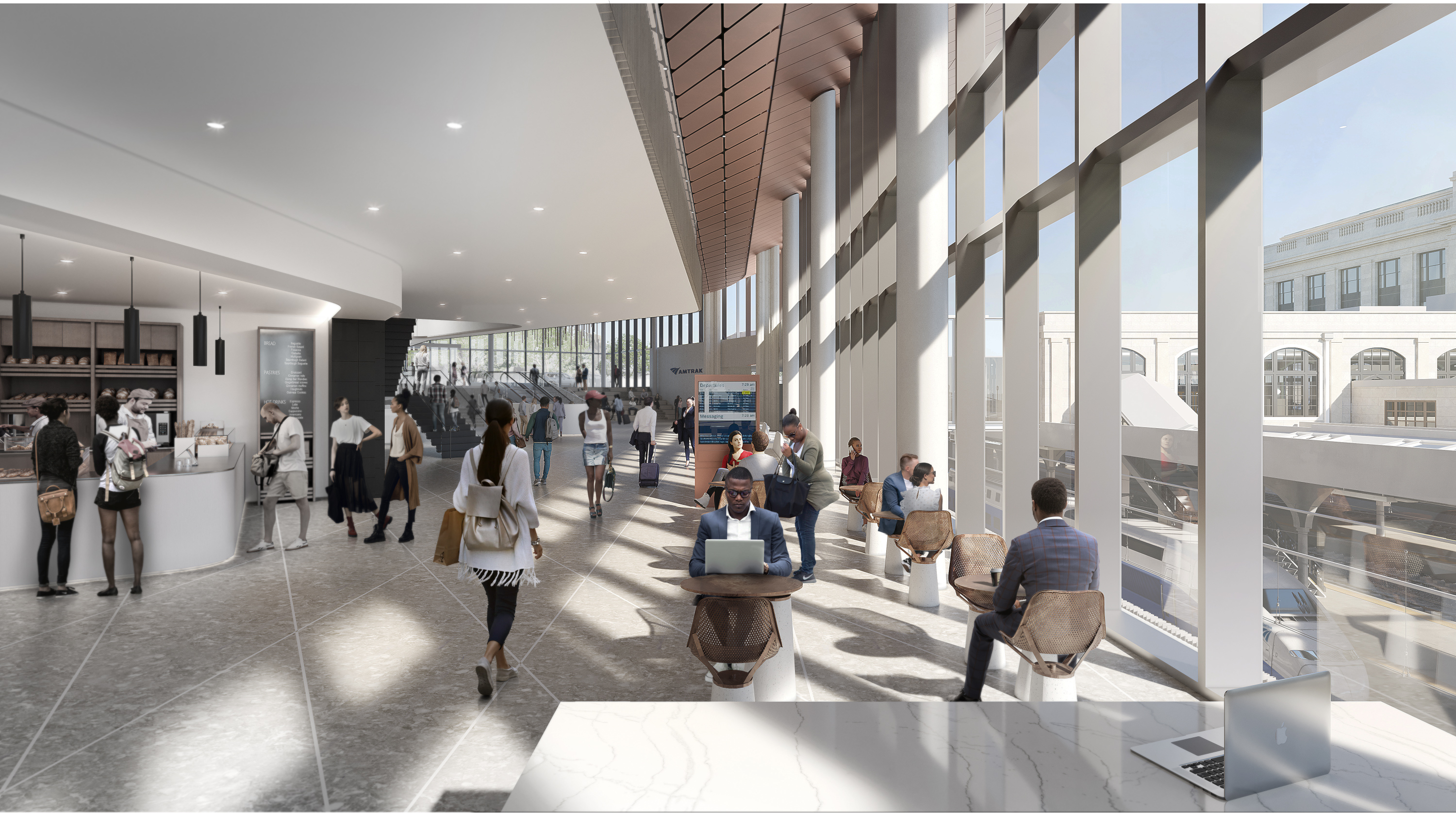 The plan, he said, will need to ensure that all aspects of the area, including the transportation resources, are “truly connected and accessible.” The nature of the surrounding area may ultimately mean that some design solutions are distinctive, even quirky. But the development team sees beauty in those distinctions.
The plan, he said, will need to ensure that all aspects of the area, including the transportation resources, are “truly connected and accessible.” The nature of the surrounding area may ultimately mean that some design solutions are distinctive, even quirky. But the development team sees beauty in those distinctions.
“Our design team loves using the example of kintsugi, which is the Japanese art of mending broken ceramics with gold,” Beatty said. “That is really what this development is. You have a gash in the middle of the urban landscape, but the idea is to take advantage of that and create something truly unique.”
State officials are currently engaged in efforts to create a strategy to implement a variety of TODs along the Penn Line, identify and advance near-term opportunities for TODs in greater Baltimore, modernize the state’s TOD policies, provide greater funding (starting in 2025) to TODs, and forge partnerships with private developers.
Those efforts are essential to achieving Maryland’s smart growth and climate change objectives, said David Zaidain, Chief of Real Estate and Transit-Oriented Development in the Real Estate and Economic Development office of the Maryland Department of Transportation.
“We want to create optimal developments that generate benefits in terms of transit ridership, economic development, community and placemaking,” he said. The state’s vision for TODs is also evolving.
“The Moore-Miller administration is very focused on equity,” Laria said. “What equity means in the context of smart growth and the context of TODs is that you are not only including mixed uses, but also mixed incomes in those developments so that everybody can benefit from transit.”
The state has also redefined TODs to cover a half-mile radius around the transportation facility.
“We are not just going to look at the development sites. We are going to look at that half-mile area around the sites and ask what public improvements do we need to improve connectivity,” Zaidain said.
Pedestrian walkways, e-bike services and other improvements could make TODs more connected with and accessible to surrounding neighborhoods, he said. “For us, it is not just about what development can we get, but how can we make it equitable and connected so it brings optimal benefits to the community.”
The state’s revised approach to TODs will begin to play out this month as MDOT holds its first public-input session on the proposed Reisterstown Plaza TOD. “Expectations have been raised,” Zaidain said.
The state, the city and the developer are considering a mix of uses on the site, increased density and a reimagining of Wabash Avenue to provide better connection to transit. The partners expect to finalize a master development plan this winter.
